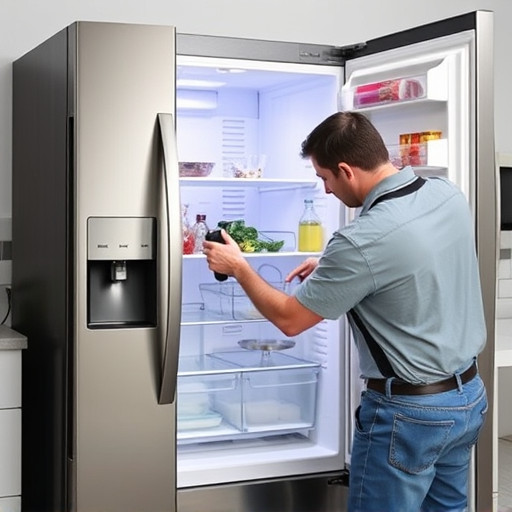Considering a refrigerator upgrade? It's crucial to weigh the energy efficiency and age of your current fridge against the potential savings from a newer, energy-star certified model. Older models over ten years old often consume more electricity, leading to higher bills, so replacing them with modern, efficient units can result in significant energy cost reductions, up to 20%. Before deciding on a new purchase, evaluate your fridge's energy label and consider whether frequent repairs are justifying the investment. Regular maintenance and timely refrigerator repair can extend an appliance's life, but if repairs are too costly or ineffective, investing in a new one may be the better option for both your budget and the environment. When replacing, ensure proper installation to maximize efficiency and energy savings, which includes measuring space, securing the unit levelly, connecting power and water lines as needed, and ensuring doors seal properly. Remember that maintaining energy efficiency after installation is key, requiring consistent upkeep and prompt repairs when necessary to continue reaping the financial and environmental benefits of an energy-efficient refrigerator.
Refrigerator efficiency plays a pivotal role in both reducing energy consumption and optimizing household budgets. This article demystifies the process of upgrading to energy-efficient refrigerators, offering insights into assessing your current appliance’s performance and determining if repair or replacement is the most cost-effective option. We guide you through the technicalities of professional repair evaluation and provide a detailed step-by-step installation process for an energy-efficient model. Furthermore, we explore the significant long-term savings and environmental benefits that come with making this eco-friendly choice, emphasizing the importance of sustainable practices in domestic settings.
- Assessing Your Current Refrigerator Efficiency and Potential for Upgrade
- Evaluating the Cost-Benefit of Professional Refrigerator Repair vs. Replacement
- Step-by-Step Guide to Installing an Energy-Efficient Refrigerator
- Long-Term Savings and Environmental Impact of Choosing Energy-Efficient Appliances
Assessing Your Current Refrigerator Efficiency and Potential for Upgrade
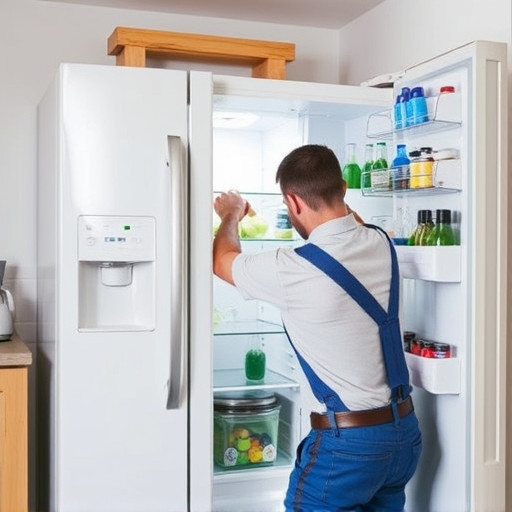
When considering energy-efficient upgrades for your home, assessing your current refrigerator’s efficiency is a critical first step. A refrigerator is a household staple that operates daily, making its energy consumption and efficiency paramount to your utility bills. To evaluate your fridge’s performance, you can start by checking its energy consumption, model, and age. Energy labels on appliances provide valuable information about their efficiency; newer models are often more energy-efficient than older ones. If your refrigerator is over a decade old, it might be time for an upgrade to a model with a superior energy rating, which can significantly cut down on energy costs over time.
Refrigerator repair can temporarily resolve issues affecting performance, but if frequent repairs are needed or the appliance consistently falls short of modern efficiency standards, a replacement might be more cost-effective in the long run. Upgrading to an Energy Star-certified refrigerator can save you up to 20% on electricity bills compared to a non-energy-efficient model. The decision to replace rather than repair should also factor in the expected lifespan of the appliance and the potential rebates or incentives available for energy-efficient models, which can further offset the initial investment. Proactive maintenance and timely upgrades ensure that your refrigerator remains a reliable and economical part of your kitchen.
Evaluating the Cost-Benefit of Professional Refrigerator Repair vs. Replacement
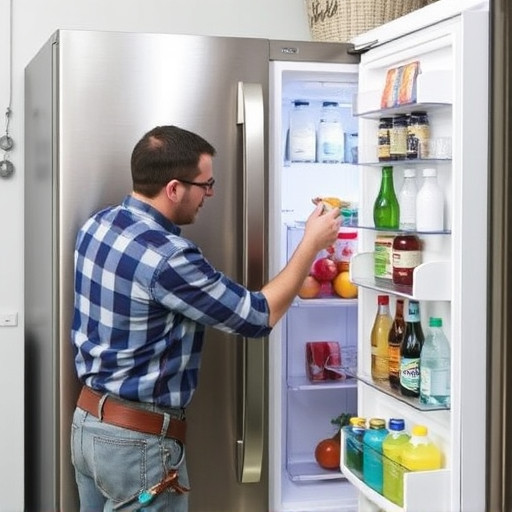
When a refrigerator malfunctions, business owners and homeowners alike face a decision that weighs immediate repair against long-term replacement. Professional refrigerator repair can extend the lifespan of your appliance and often proves to be a cost-effective solution in the short term. However, before opting for repairs, it’s prudent to evaluate the age, frequency of repairs, and energy efficiency of the unit. If the fridge is older and consistently requiring service, or if repairs would amount to half the cost of a new, energy-efficient model, replacement might be the more economical choice in the long run. Energy-efficient components not only reduce your carbon footprint but also lower utility bills significantly. When considering replacement, it’s essential to select a model that aligns with your energy usage patterns and budget. The savings from reduced energy consumption can offset the initial investment, making the transition to a newer, more efficient refrigerator a wise financial decision.
Step-by-Step Guide to Installing an Energy-Efficient Refrigerator
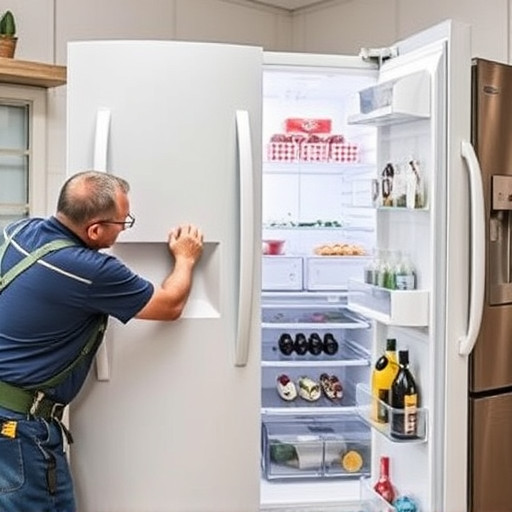
When upgrading to an energy-efficient refrigerator, careful installation is key to maximizing savings on your electricity bill and ensuring optimal performance. Begin by measuring the space where the new refrigerator will be placed to confirm that it fits and allows for proper air circulation around the unit. Next, unplug or turn off the power supply to the old refrigerator and disconnect it from the water and gas lines if it’s a model with these features. Remove the doors to avoid any risk of them opening during transport and potential spillage or leaking. Carefully move the old refrigerator out and position the new one in place, aligning it with the existing cutout. If necessary, use a level to ensure the refrigerator is stable and won’t tip over. Connect the electrical supply, adhering to local wiring codes and ensuring that the cord fits snugly into the designated outlet. For water- or ice-making models, reconnect the water line, making sure the valves are properly tightened to prevent leaks. If gas is required for the refrigerator’s operation, follow the manufacturer’s instructions to securely attach the gas line. Finally, reattach the doors, ensuring they close properly and that seals are intact to maintain energy efficiency. After installation, allow the new refrigerator to acclimate to the room temperature for at least three hours before plugging it in and turning it on. This step ensures that the appliance operates efficiently from the start. Regular maintenance and timely refrigerator repair can further prolong its energy-efficient lifespan. By following these steps, you’ll be able to enjoy the benefits of an energy-efficient refrigerator, including reduced energy consumption and cost savings over time.
Long-Term Savings and Environmental Impact of Choosing Energy-Efficient Appliances
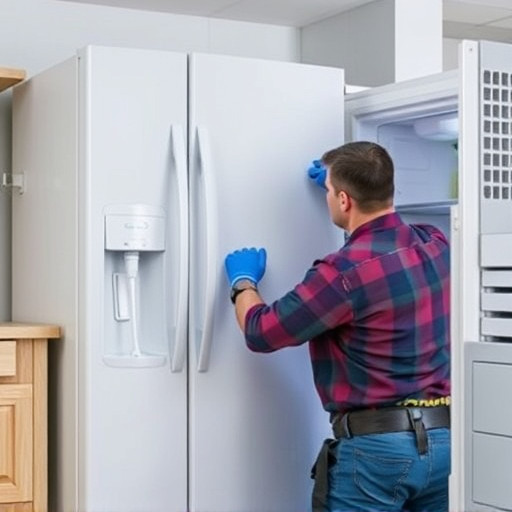
Incorporating energy-efficient components into residential and commercial spaces offers a dual advantage in terms of long-term financial savings and environmental impact mitigation. Selecting energy-efficient appliances, such as refrigerators designed for optimal performance and minimal energy consumption, can significantly reduce utility bills over time. These appliances operate more efficiently, which translates to lower electricity costs. Homeowners and businesses alike can expect substantial savings on their energy expenses, especially when considering the cumulative effect over several years. This not only eases the financial burden but also encourages reinvestment in other sustainable practices or essential areas of need due to the money saved.
Moreover, the environmental benefits of opting for energy-efficient appliances are profound. The reduced energy consumption directly correlates with lower greenhouse gas emissions, contributing to a healthier planet. By choosing products that have a lower carbon footprint, consumers can play a pivotal role in reducing the overall impact of human activities on the environment. It is crucial to recognize that refrigerator repair and maintenance also play a vital role in maintaining energy efficiency. Regular servicing ensures these appliances continue to operate at peak performance, further reinforcing the savings and environmental benefits associated with their initial selection. This proactive approach not only extends the lifespan of the appliance but also upholds the commitment to sustainable living practices.
In concluding our discussion on optimizing home energy usage, the installation of energy-efficient refrigerators emerges as a prudent step for both financial savings and environmental responsibility. By carefully assessing your current refrigerator’s efficiency and exploring upgrade options, homeowners can make informed decisions that align with their budgetary needs and sustainability goals. The cost-benefit analysis of professional refrigerator repair versus replacement is a critical consideration, often tipping the scale in favor of energy-efficient upgrades due to their long-term savings potential. Our step-by-step guide demystifies the installation process, ensuring a smooth transition to more efficient appliances. Ultimately, the collective shift towards energy-efficient appliances like refrigerators not only reduces utility bills but also lessens the carbon footprint, contributing to a greener planet. Homeowners who prioritize these upgrades will find that the initial investment is offset by the ongoing savings and positive environmental impact of their choice.
